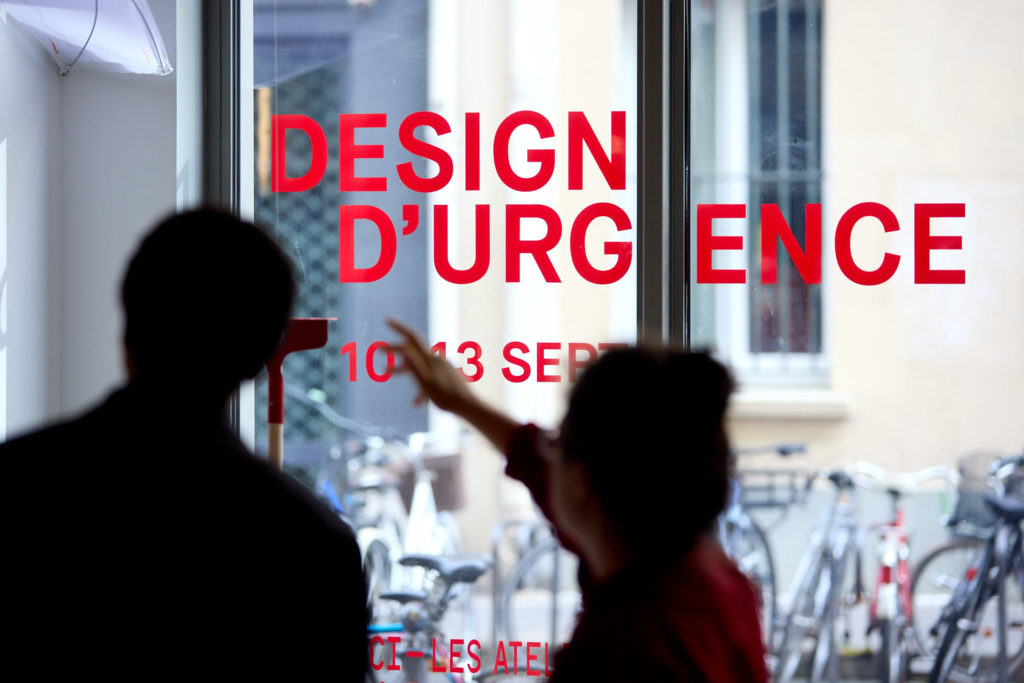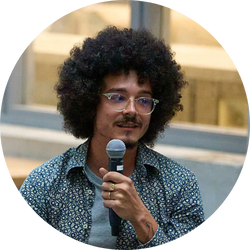
Milan Kieffer, Innovation Designer at French Red Cross, explains how design can drive humanitarian innovation. During the Emergency Design exhibition at Paris Design Week, students from ENSCI – Les Ateliers explored how creative methods can respond to crisis situations. From shelters to water tools, the initiative shows how design can turn ideas into impact. For Milan, both designers and humanitarians start from the same place: people’s real needs.

To start with, could you tell us a bit about the event at Paris Design Week and why the French Red Cross decided to take part this year?
Paris Design Week takes place every year to highlight the world of design and creation. This year the theme was useful design. In that context, we worked with the design school ENSCI – Les Ateliers to present the exhibition Emergency Design: anticipating, protecting, rebuilding. Over four months, the students developed innovation concepts for humanitarian crisis contexts, with a special focus on emergency design. During the exhibition, which welcomed about 300 visitors over three days, 26 of these projects were displayed. One of these ideas, the water tap nozzle, in already being prototyped and tested on the field, in partnership with the Kenya Red Cross Society and their Innovation Lab (I.O.Me) is already being tested on the ground. Three other concepts could soon move to the prototyping phase stage. For the French Red Cross and the Innovation department, it was a way to put the spotlight on how design can be mobilized in humanitarian contexts.
From your perspective, what is design really about, especially when we talk about humanitarian action?
For me, the expression “useful design” feels sounds redundant, because design, by definition, is always meant to be useful. Too often people think of design as something purely decorative or stylish. But in reality, it’s not just about appearances, it’s about how things are conceived. Design is a process, a way of creating solutions that respond to real needs.
And it’s not limited to objects. You can design services, systems, even policies. Take a free bike-sharing service, for example: every part of it (the bikes, the stations, the app, the subscription) has to be designed together as one coherent ecosystem.
In the humanitarian field, this is where design reveals its full value. It can become a real lever for social innovation, helping to create tools, services and programs that make sense for the people who will use them.
How do we move from design to actually addressing humanitarian issues on the ground?
What I find really interesting is that designers and humanitarians actually think in very similar ways, but they approach solutions differently. Both are centered on people’s needs: designers call it a user-centered approach, humanitarians call it a needs-based approach. In practice, it comes down to humility, sobriety, and adaptability.
Designers are trained to imagine many possible solutions and explore a problem at different levels. Humanitarians, on the other hand, are used to being flexible and working with whatever resources are available there and now, especially in a crisis situation. When you combine the two, you get a complementary approach: design opens up multiple options, humanitarian work adapts them to the urgency of the field.
As one student put it “The pivotal moment for me was realizing that we weren’t there to design a ‘ready-to-use’ object, but rather tools and manuals to help communities rebuild for themselves.” The question we have to ask ourselves, as designers is: what is the bare minimum we can provide on site so that the communities can take charge of rebuilding?
The students have already taken this first step of turning an idea into something concrete that addresses a real need. The next step is to confront this idea with field realities. For example, last July, the French Red Cross worked with the Kenyan Red Cross Society and their Fablab in Mombasa equipped with 3D printing capacities. Together they started testing one of the student projects: the Jerrycan Tap, designed by Louise Eugénie Côtier. This 3D-printed nozzle can be swapped to control the flow of water, helping reduce waste and improve daily use for families.
Louise Eugénie Côtier : “By adopting a minimalist approach to optimize the equipment sent by the Red Cross, I designed a kit tap with different nozzles that can reduce and adapt the water flow from jerrycans according to the various primary daily uses of populations facing water stress.”
You personnaly went to Mombasa, in Kenya, to test this prototype with the Kenyan Red Cross. How was this collaboration? What was your “Aha” moment?
Working directly with the engineers in the FabLab, we quickly realized that the first version of the prototype did not fit all types of containers. We designed a new version together: instead of a screw system, which could be complicated, we developed a conical shape with small clips. This way, the tap can adapt to different containers without needing glue or screws.
I spent two days with the team in Mombasa, which gave us the chance not only to improve the prototype but also to build a stronger connection with the people who will continue developing it.
Coming back to the collaboration with the design school, was there a student project during the exhibition that particularly caught your attention?
Zacharie Begouen Gaste, one of the students, managed to get in touch with a Palestinian in Gaza through Snapchat, in order to understand daily life there. He was told that cooking meals was a real struggle, since many kitchens had been destroyed and people had to rely on wood fires. From that conversation, he designed a modular kitchen that can be delivered flat and assembled without tools. I found it striking to see how a student could build such a direct connection in one of today’s most critical contexts, and turn it into a concrete design proposal.
Zacharie Begouen Gaste : “By analyzing videos posted on social media from refugee camps and by contacting Palestinians living in extremely precarious conditions, I developed a concept for an ‘improved cooker’ that addresses several issues: saving resources, improving cooking quality, being easy to transport, providing heating inside shelters, ensuring safety, and allowing people to share one collective fire.”


